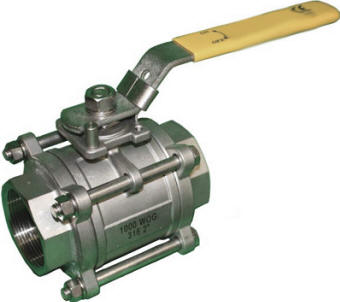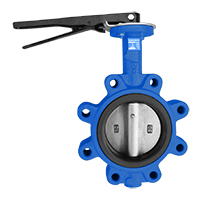Comparing Ball Valves to Butterfly Valves
There have been several articles written on this comparison, however this one will be a little more in-depth and tailored to the products we offer.
There are some applications where you can use either style valve and the decision will likely boil-down to pricing and availability whereas many applications have design requirements which favor one design or the other.
At the simplest level both butterfly and ball valves are ¼ (90º) turn devices to control flow on, off or somewhere in-between, but that's pretty much where the similarities end.
Butterfly valves tend to be used for water and water-like applications having little or no solids and generally at lower pressures, typically commensurate with 150# ANSI flange ratings (up to 285 PSIG between -20ºF to 100ºF). Applications involving higher temperatures or pressures, low temperatures, gasses and high particulate loads lend themselves to ball valves.
The reason for this is the design of a butterfly valve requires the disc to always be within the flow path, thus it contributes to pressure drop and if stringy solids are present (seaweed, hair, plastic) there's more chance for impeding the sealing between the disc and seat.
The relatively simpler design of a butterfly valve often equates to reduced cost and lighter weight, especially for pipelines greater than 6".
There are three types of butterfly valve designs to learn about in our article: Concentric (zero offset), double offset and triple offset butterfly valves.
 Ball
valves exist from very inexpensive and "simple" designs to the extremely
complex, enabling positive shut-off for liquefied gasses and slurries as
well as having specialized features involving
fire safety and sanitary requirements which support
CIP and SIP procedures. In the oil and gas industry some pipelines
need valves compatible with
piggable service, which essentially involves equipment passing through the pipelines for cleaning and inspection purposes, thus such applications
are not compatible with butterfly valves.
Ball
valves exist from very inexpensive and "simple" designs to the extremely
complex, enabling positive shut-off for liquefied gasses and slurries as
well as having specialized features involving
fire safety and sanitary requirements which support
CIP and SIP procedures. In the oil and gas industry some pipelines
need valves compatible with
piggable service, which essentially involves equipment passing through the pipelines for cleaning and inspection purposes, thus such applications
are not compatible with butterfly valves.
In applications where you can go either way, in addition to pricing and delivery concerns, sometimes the preferred method of installation might be a deciding factor. Butterfly valves are installed either sandwiched between two existing pipe flanges (wafer style butterfly valve) or have flanged ends. Ball valves can be provided in "wafer" designs and with flanged ends, but also with threaded, socket (weld and glue), RTJ, sanitary tri-clamp, ringed groove (Victaulic®), tube and cam-lock (to name the most popular).
We can supply ball and butterfly valves in both alloy and non-alloy materials; mostly you should try to match the valve material with the pipeline material because dissimilar materials have different coefficients of expansion, although cases can be made for using non-alloy valves in alloy pipelines from a reduced cost perspective when the velocity, temperature and pressure are compatible.





